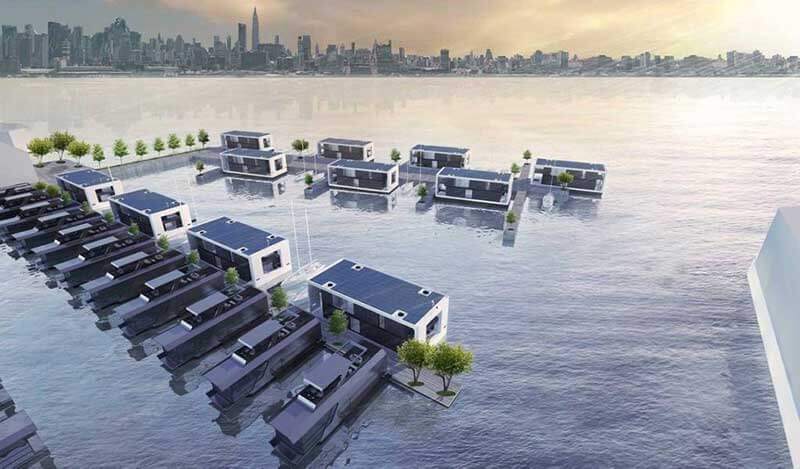- Human activity is increasing the frequency and intensity of hurricanes
- Perfect combination between a yacht, a floating house and a luxury waterfront villa
- Hydraulic, self-elevating system and shock-resistant glass
Now isn’t a very good time to live near the coast. Rising sea levels and the growing threat of hurricanes are having a devastating effect on coastal communities around the world, destroying homes and taking lives. And things are only expected to get worse in the future, as the consequences of climate change become more pronounced. Scientists believe that, once again, human activity is to blame.
Human activity is increasing the frequency and intensity of hurricanes
Hurricanes have increased in both frequency and intensity over the last couple of decades, and there’s a growing pile of evidence that suggests we’re to blame. The burning of fossil fuels is gradually warming up our planet, increasing the temperature of the oceans and the atmosphere. A warmer atmosphere can store more water vapour, resulting in heavier rainfall, while warmer waters feed hurricanes and boost their destructive power. It’s clear that we need to do something to reduce our carbon footprint before things get completely out of hand. But at the same time, we also need to prepare ourselves for the possibility that we’ll be forced to deal with hurricanes on a more regular basis in the coming years. Thankfully, the Dutch architect Koen Olthuis and the Miami-based company Arkup have an interesting solution to this problem: floating homes that can withstand category 4 hurricanes.

Perfect combination between a yacht, a floating house and a luxury waterfront villa
Described as “the perfect combination between a yacht, a floating house and a luxury waterfront villa”, these 400-square-metre floating sanctuaries feature 4 bedrooms and 4.5 bathrooms and are equipped with waste management, rainwater harvesting, and rainwater purification systems. There are also 60 kW solar panels on the roof and a lithium-ion battery of up to 1,000 kWh below the deck, which allows for going completely off-grid. “Our aim was to create the best of both worlds, in terms of residential and yachting solutions,” explains Arkup’s co-founder, Nicolas Derouin. “The solution adds mobility and more freedom to conventional living, as it is a movable structure, so it’s more flexible and dynamic. It won’t provide the same speed and range as a yacht, but it will provide a far more comfortable environment with more living space.”
Hydraulic, self-elevating system and shock-resistant glass
The most interesting feature of these ‘liveable yachts’, as they’re called by their designers, is the hydraulic self-elevating system that can lift them above the surface of the water using 12-metre-long hydraulic spuds. This keeps them completely stable, even during a category 4 hurricane, where wind speeds can reach 250 kilometres per hour. The floating homes are also protected by shock-resistant glass panels, with a 7×3.5 metre sliding terrace providing some additional outdoor space and allowing you to enjoy a beautiful view of your surroundings. They’re also equipped with a sophisticated communications system that includes satellite TV, Wi-Fi antennas, LTE, and VHF, allowing you to stay connected even when you’re out on the ocean. The propulsion system consists of two 136-horsepower azimuth electric thrusters that can reach speeds of up to 7 knots, or 13 kilometres per hour, which is comparable to the speed of a typical yacht. However, all this pleasure doesn’t come cheap, and a single liveable yacht will set you back anywhere between $2-3.5 million.
Take a look at these floating homes here:
Rising sea levels and increased hurricane activity have made living near the coast a lot more dangerous than it used to be. And if this trend continues, even those living further inland won’t be safe for long. Unless we do something to reduce our carbon footprint quickly, we may have to find a way to adapt to living on a planet that’s becoming increasingly inhospitable and where hurricanes could be a relatively common occurrence. If that happens, we may all soon find ourselves living in hurricane-proof floating homes, such as the ones designed by Olthuis. That is, if we can afford them.
Share via:


